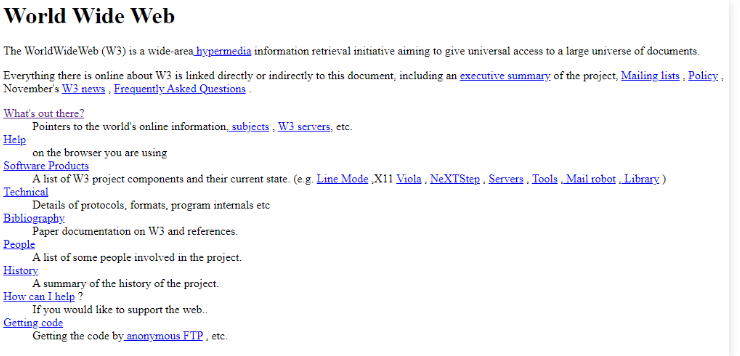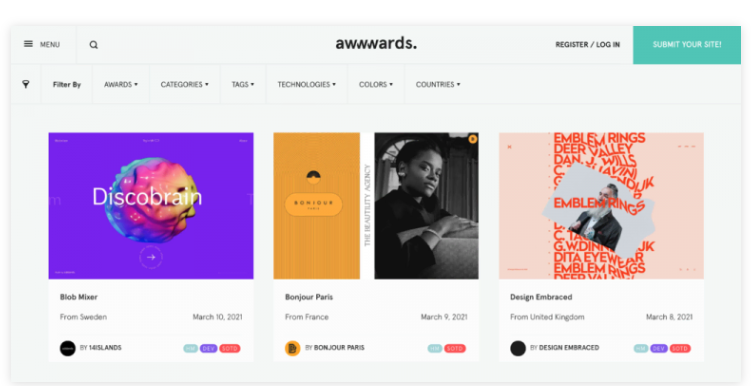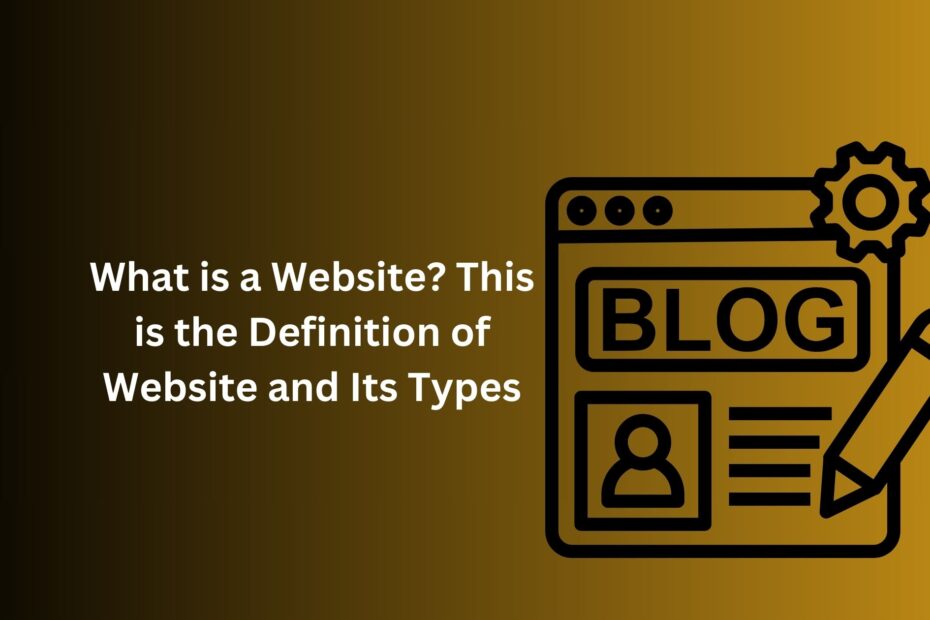A website is one of the important tools that can be used by businesses and individuals for various purposes. Whether for small companies, large companies, or freelancers, a website can be an effective weapon to introduce yourself on the internet.
Moreover, it can be said that nowadays websites are almost inseparable from everyone’s daily life. Almost everyone uses websites to find information, business branding, present content, product promotion, and even earn income.
Read More : Teachers see gay acceptance among young people declining partly due to Andrew Tate
Seee More : https://heylink.me/sabrina-zahira
But what exactly is a website? What are the benefits that can be obtained from it? Well, in this article, we will discuss the definition of a website and how it works and explain its components, types, and categories. Scroll down now!
Understanding Websites
A website is a collection of web pages or ‘locations’ on the internet where you store information and present it for anyone to access online. This information can be about yourself, your business, or even a topic you are interested in.
Like most ‘locations’, websites work using an address system that will tell you the exact location on the internet so you can access it through a web browser.
In simple terms, the address is similar to the address you use to go to a place in a maps application. When you access a website address, the web browser will go to the specified location and retrieve the website files.
This information retrieval process is carried out by web services using technologies such as Hypertext Transfer Protocol (HTTP) and File Transfer Protocol (FTP ). These protocols basically serve to determine how information and files are transmitted over the web.
The browser then displays the page on your device’s screen using technologies such as HyperText Markup Language (HTML ) and Cascading Style Sheets (CSS ). These technologies structure and present the content of the website to visitors by telling the web browser where to place the information on the screen.
Although it requires a programming language or coding for a website to be displayed on the screen, fortunately you don’t need to learn a programming language or have an IT background to create a website.
In fact, you can turn your website idea into a fully functional website in minutes, without any coding at all! Wow, how is that possible?
The solution is to use a website builder .With Hostinger AI Website Builder , you only need to enter a few sentences, such as your brand name and site description, and the tool will immediately create a template for you.
Next, you can use the drag-and-drop editor, which allows you to edit all elements of the website intuitively by simply dragging several elements on the editor screen.
Website History
The history of websites began with Tim Berners Lee, who developed the World Wide Web (WWW) in 1989. In October 1990, Tim came up with three basic technologies for building a website, namely HTML , URL, and HTTP.
Initially, the website was designed only to share information among scientists at CERN . Until finally, Tim saw its potential as a tool that could be used by anyone for various purposes. Then, he officially released it on August 6, 1991.
The first website released at that time only displayed simple text without any font variations, videos, or images. In fact, this site still exists today! You can access it via the URL http://info.cern.ch/hypertext/WWW/TheProject.html , with a display like this:

Tim Berners Lee then asked CERN to agree to make the basic code of the website available royalty-free to all internet users. Finally, the decision was announced in 1993, and websites began to appear all over the world, as we often see today.
Types of Websites
Basically, most websites can be grouped into two main types, namely static and dynamic websites .
To help you better understand the differences between these two types of websites, we will discuss the meaning of static and dynamic websites below.
Static
Static websites are generally quite simple in terms of design and functionality, and often have a simple purpose as well. The content and appearance of this type of website will remain the same for all visitors, regardless of browser, location, or device.
Static web pages cannot accept input or actions from visitors, but can still contain animations and clickable elements such as hyperlinks or navigation buttons. This makes static websites an ideal choice for portfolios and catalogs.
Skyline Furniture MFG is a perfect example of a static web. They use static pages built from basic HTML to display text, images, and navigation links that take you to other pages.

Dynamic
Dynamic websites can display content and appearance that changes based on several factors, including time, location, language preferences, and previous interactions the visitor has had with the site.
This makes this type of dynamic website most suitable for e-commerce businesses or online stores, social media, ticket bookings, and forums.
Amazon.com is a popular example of a dynamic website. Its homepage displays product recommendations to visitors based on their location, purchases, and search history.

However, there are also sites that consist of a combination of static and dynamic pages. These websites usually have static information pages such as About Us or Contact, as well as other dynamic pages such as product catalogs, news feeds, and home pages.
From the static and dynamic website types, there are still several categories to group websites based on their functions. By understanding these types and categories, you can determine the choice that best suits your needs.
For example, whether you want to sell products, advertise services, showcase your work, or simply tell stories about your daily life, the right categories can help you build and optimize your site more efficiently.
Starting from the most common, some types of websites are:
1. Online Store
An online store is typically used to offer services or sell products on the internet , allowing you to accept payments, process orders, manage logistics and shipping, and provide customer support.
One example of an e-Commerce website is Ikea.com , where you can order and buy household furniture, and the company will deliver it to your home.
2. Blog
A blog is a website that provides visitors with the latest information about a company, business, individual, or brand. This information is usually presented like an online journal, with topics that include recent news or experiences.
Blog posts can also contain various forms of content, such as text, images, and videos. Thus, blogs can serve as a powerful on-page SEO support tool to help you get more organic traffic.
3. Portfolio Website
Portfolio websites are primarily used to complement one’s resume when applying for jobs or freelance contracts.
For example, a web developer’s portfolio might showcase their most recent projects or recent certifications. Portfolio sites typically feature a single scrollable page so potential clients or employers can review the worker’s details more easily.
4. News Website
As the name suggests, this website is accessible to anyone and is dedicated specifically to presenting the latest news and information from around the world. You could say that this website is an online newspaper.
Website Elements
After learning the definition of a website and its types, you also need to know the elements of a website so you can understand the technology better.
Additionally, understanding these elements is also important if you want to create your own website, so you can better plan the costs and efforts required.
In general, the elements of a website are:
Web Hosting
Hosting is a place that provides the infrastructure needed for website owners to store, manage, and put their websites online.
Basically, your website and its files must be physically stored on a high-spec computer called a web server in order to be accessible via the internet.
In addition to infrastructure, most web hosts also handle all the technical aspects of website maintenance, such as implementing security measures, keeping the web server running, and ensuring that your website can be visited without hindrance by anyone from anywhere.

To make website management easier, Hostinger’s managed web hosting packages are integrated with an innovative and easy-to-use control panel, hPanel . With it, you can monitor resources, manage backups, upload files, and more from a single dashboard.
Thanks to its intuitive interface, you also don’t need to have advanced technical skills or master programming languages to use hPanel.
Domain
A domain is a special name that visitors use to access a website online.
A catchy domain name will help visitors remember your website more easily. Therefore, you must choose the right domain name to ensure your site delivers optimal results.
Here are some tips for creating a good domain name for a website:
- Character length – the shorter the domain name, the easier it is to remember. As a rule of thumb, choose a domain name that consists of one word and a maximum of 14 characters.
- Easy to remember and spell – your domain name should be easy to spell, even for potential visitors who are not native speakers of your language. For example, if you want to use English, make sure the word is familiar enough for people in your country.
- Keywords – a good domain name should be relevant to your characteristics and goals to make it easier for users to find your website in search engine results pages (SERPs).
- Trademarks – to avoid legal issues, do not include trademarks or use existing brand names.
- Brand name – having the same or similar domain name as the brand name will create a positive impression for visitors. They will not be confused to immediately recognize your brand.
- Availability – once you have found a domain name idea for your website, open the domain checker tool to see if the domain name is available. Because, a set of domain names and their extensions can only be owned by one person, so you should immediately secure your domain name so that no one else does.
Here is an example of a domain name in a web browser’s address bar:

URL
URL (Uniform Resource Locator) is a virtual address for anything on the internet, which can include web pages, images, videos, or even documents. Typically, a URL consists of several parts, such as protocol, domain name, extension, and path.
For example, here is the URL of this article:

Here are the details:
- https:// – this is the protocol the website uses. Typically, websites have the http or https protocol , which indicates their level of security.
- www.hostinger.co.id – domain name (hostinger) and its extension (.co.id).
- /tutorial/what-is-a-website – the exact location of the page you are visiting.
There are several ways to visit a URL:
- Enter the URL in the browser address field.
- Finding pages using search engines.
- Clicking on internal or external links within a page or document.
Design
A visually appealing design that functions smoothly without any issues can encourage visitors to explore your site further, or even become loyal visitors.
In fact, more than 80% of visitors judge a business’s credibility based on its website design.
Therefore, if you are going to create a website, web design is an area that you must pay more attention to. Fortunately, now you don’t need to bother designing a website from scratch. Just use a ready-to-use website template that is included in the website builder.
One place to get inspiration when it comes to website design is Awwwards . This platform features sites with award-winning designs.

Content
Content is the information you present on your website to help, direct, or influence visitors to take certain actions. This information can be text, images, videos, or audio recordings.
Just like design, good content is content that is able to attract visitors, making them want to stay on your website for a long time or even come back.
Since content quality is also one of the most important aspects in SEO , you should create optimized content and articles in order to rank high in SERP.
Don’t worry if you don’t have the skills and materials needed to design a website and create optimized content. You can use the AI tools included in our website builder.
In addition to 150+ ready-to-use website templates for cool web designs, we also offer AI-powered content writing tools to help you create SEO-friendly content faster.

Pingback: Hamas leader Ismail Haniyeh killed in Iran attack - smartoobiz.com